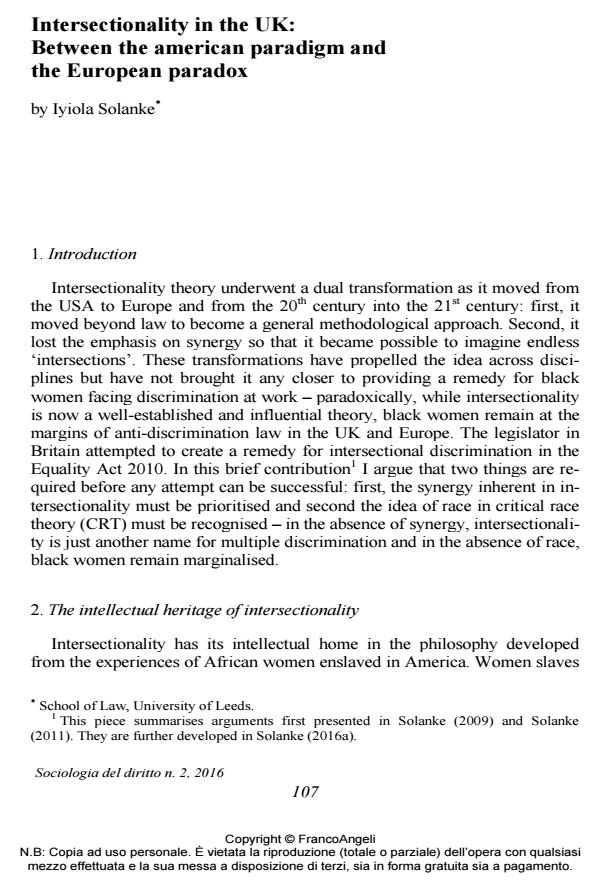Intersectionality in the UK: between the American paradigm and the European paradox
Journal title SOCIOLOGIA DEL DIRITTO
Author/s Iyiola Solanke
Publishing Year 2016 Issue 2016/2
Language English Pages 10 P. 107-116 File size 355 KB
DOI 10.3280/SD2016-002007
DOI is like a bar code for intellectual property: to have more infomation
click here
Below, you can see the article first page
If you want to buy this article in PDF format, you can do it, following the instructions to buy download credits

FrancoAngeli is member of Publishers International Linking Association, Inc (PILA), a not-for-profit association which run the CrossRef service enabling links to and from online scholarly content.
Keywords: Critical - Race - Feminism - Intersectionality - Synergy
- The misrecognition of intersectional justice claims: UK women’s workplace activism of the 1970s–1980s Ashlee Christoffersen, in European Journal of Women's Studies 13505068251385381/2025
DOI: 10.1177/13505068251385381
Iyiola Solanke, Intersectionality in the UK: Between the american paradigm and the European paradox in "SOCIOLOGIA DEL DIRITTO " 2/2016, pp 107-116, DOI: 10.3280/SD2016-002007